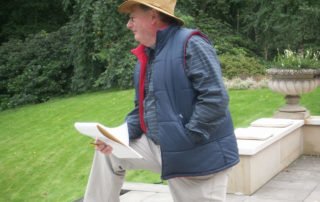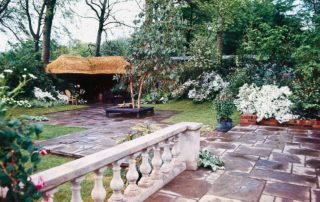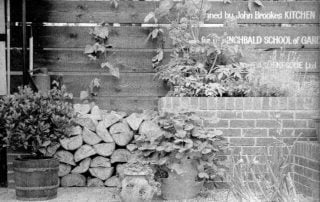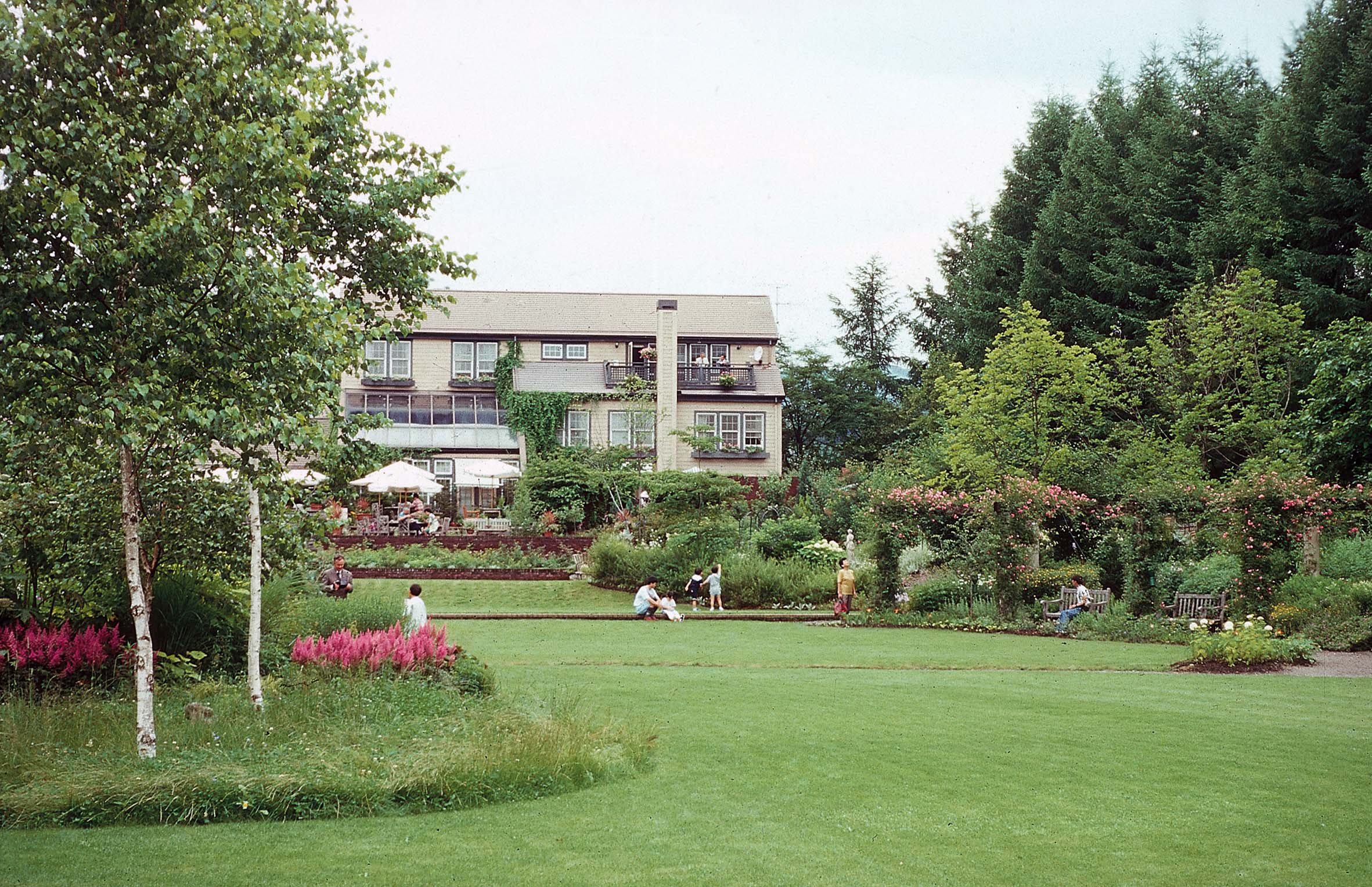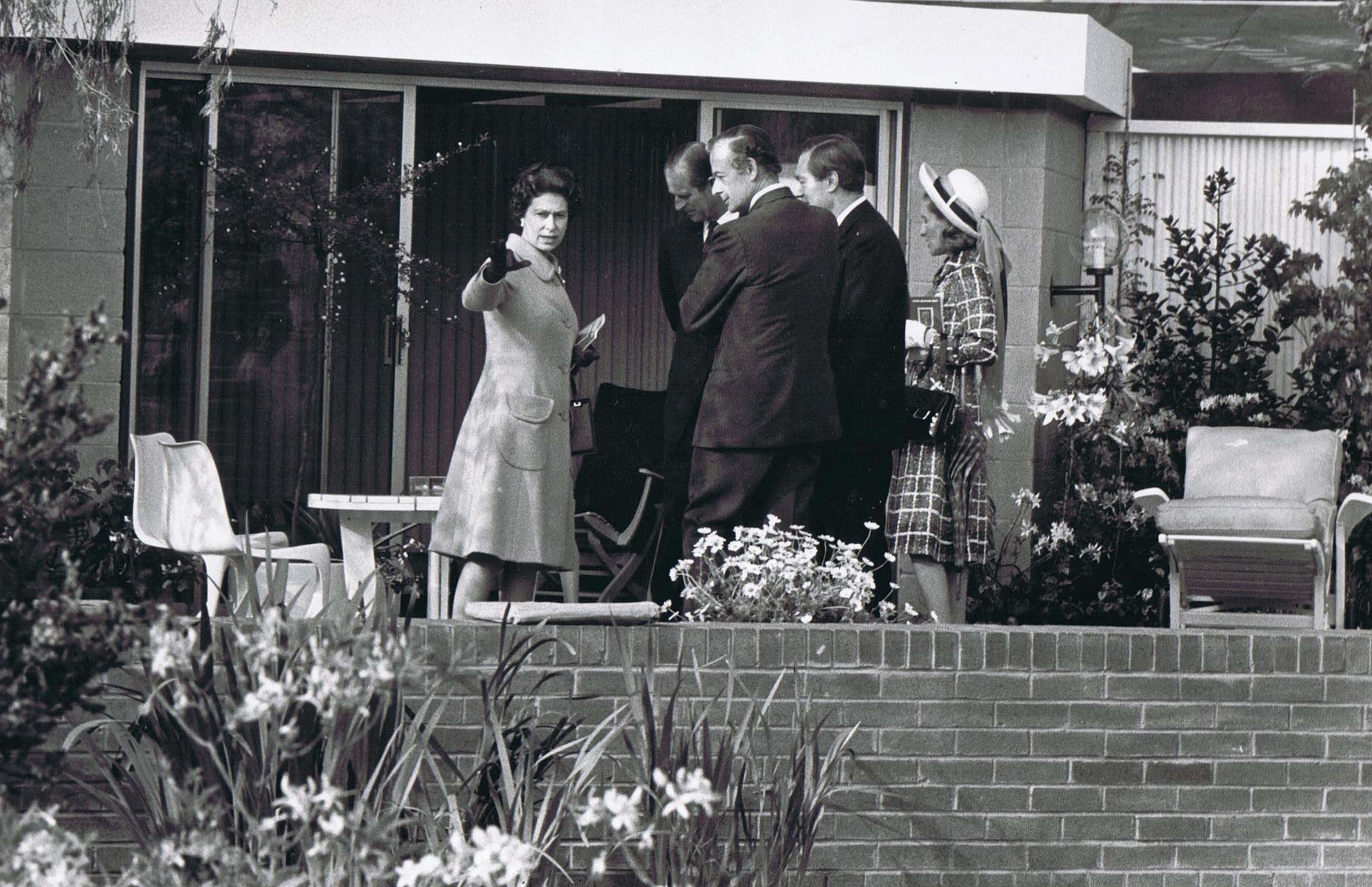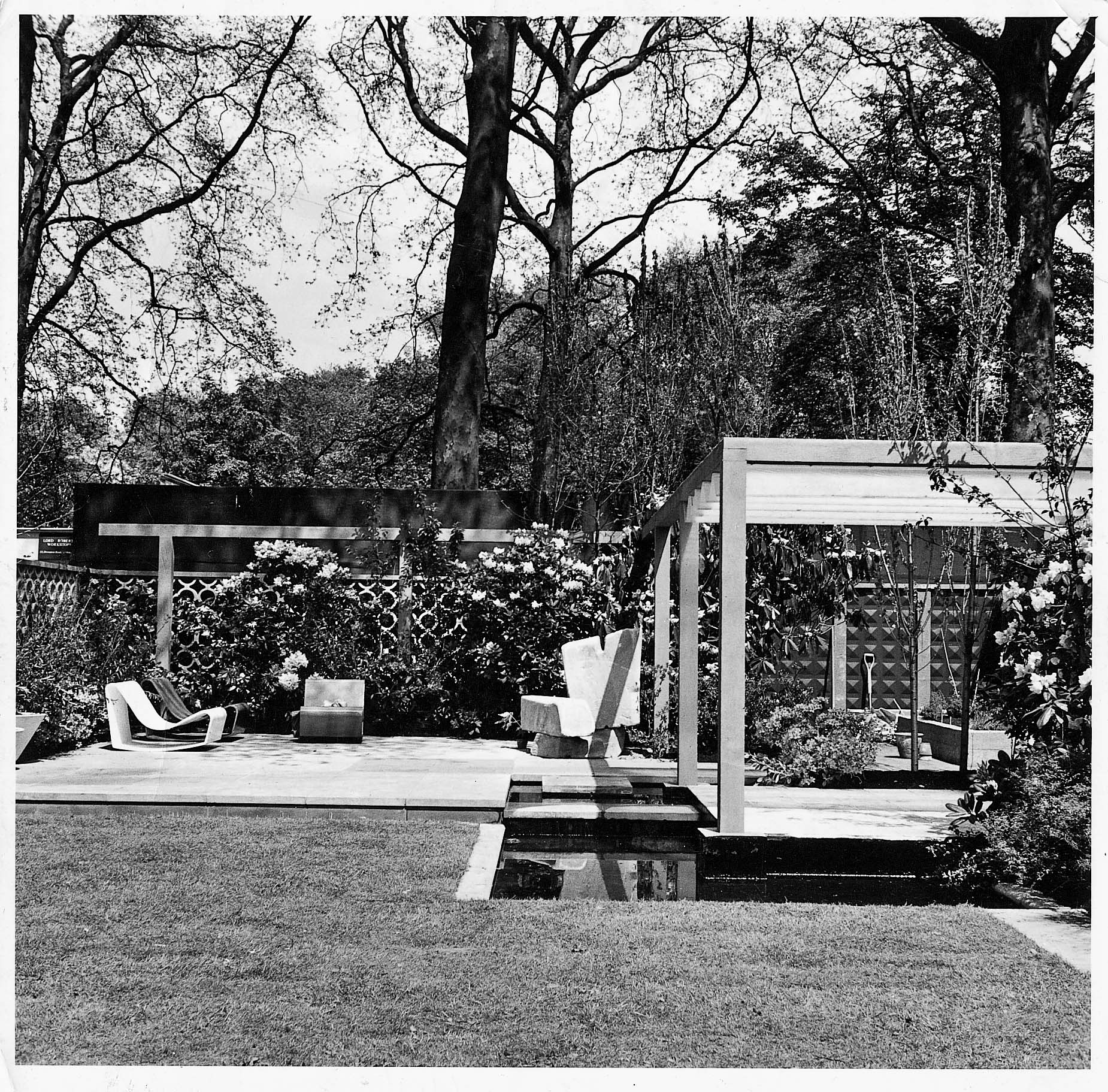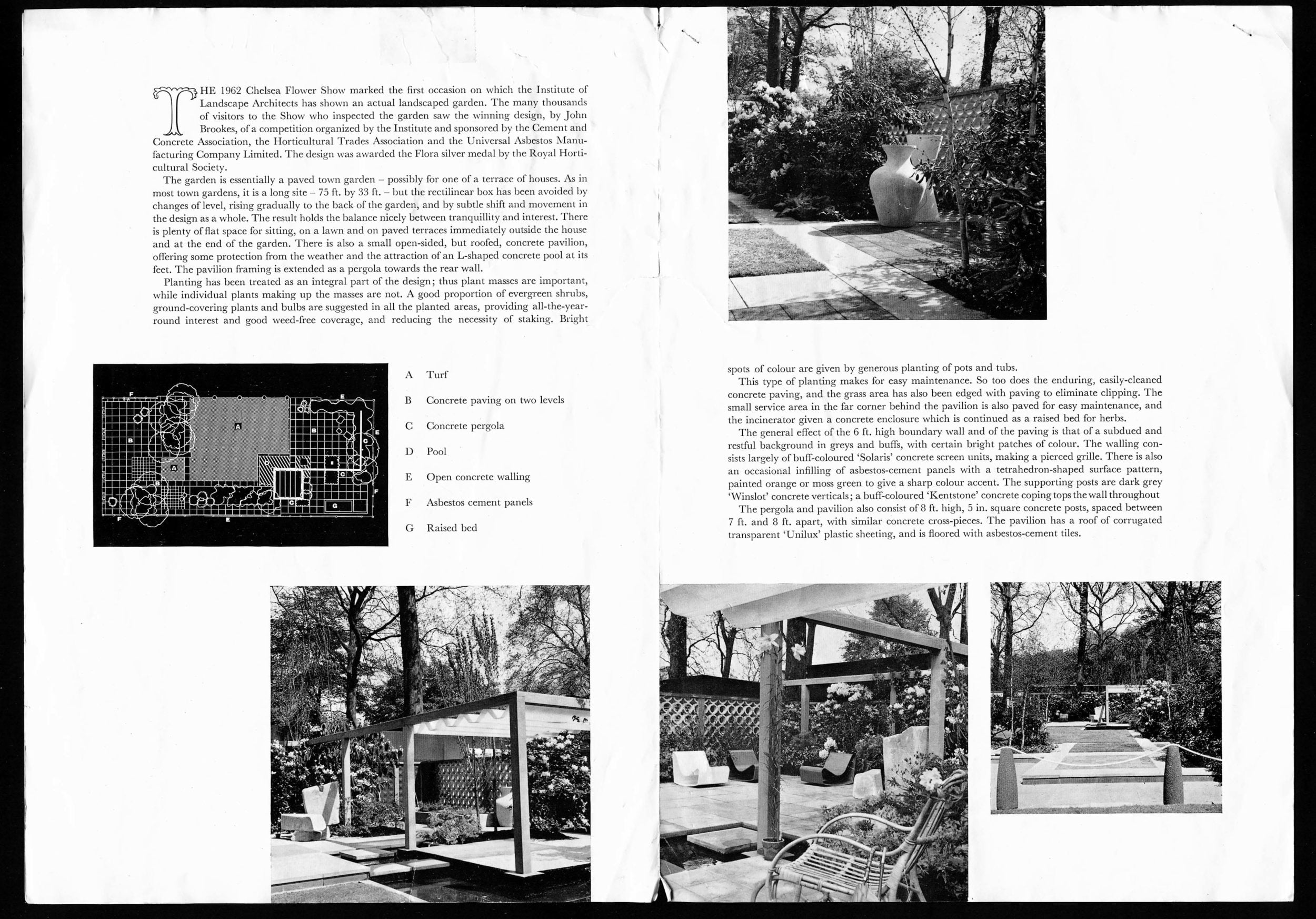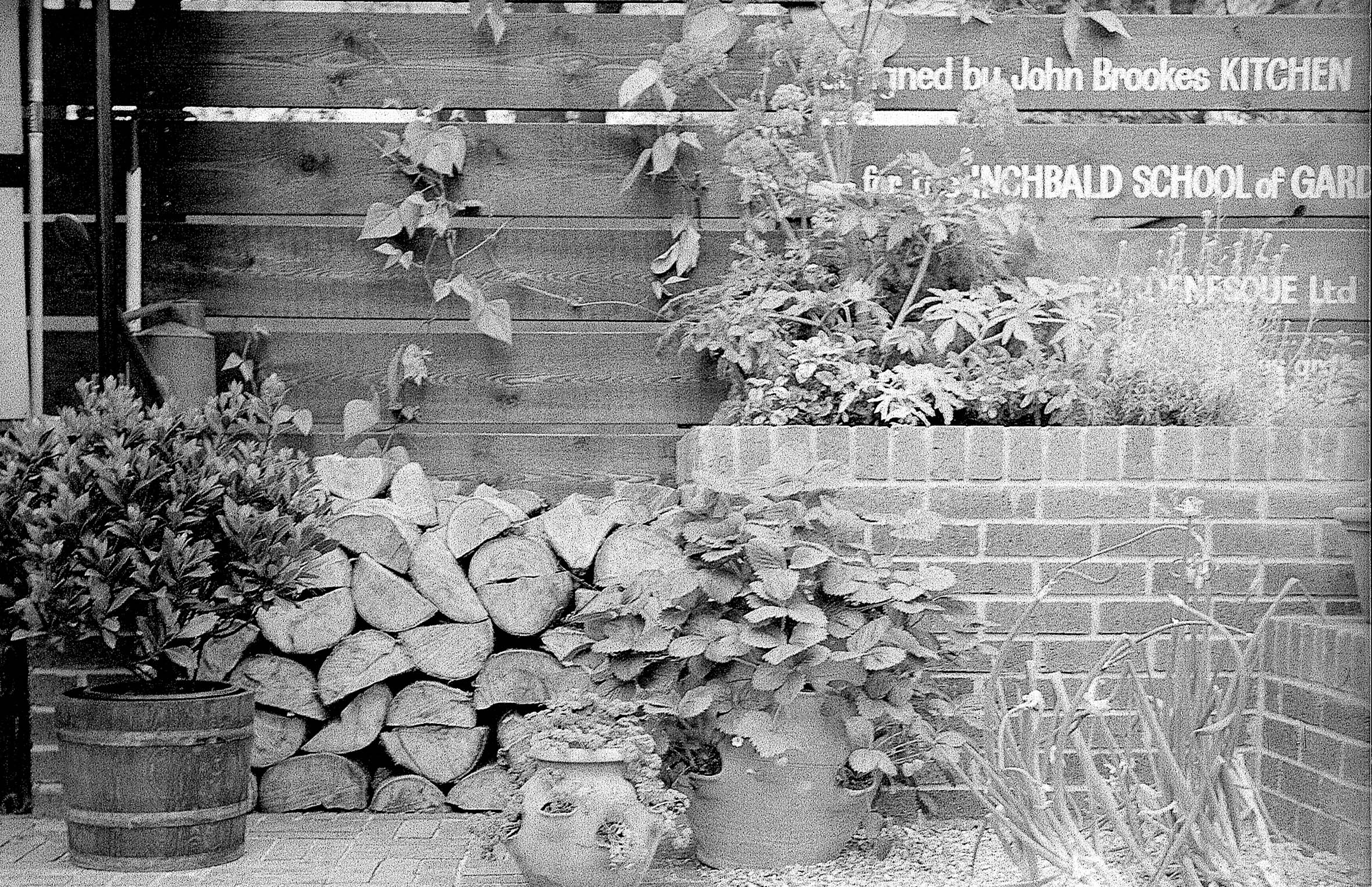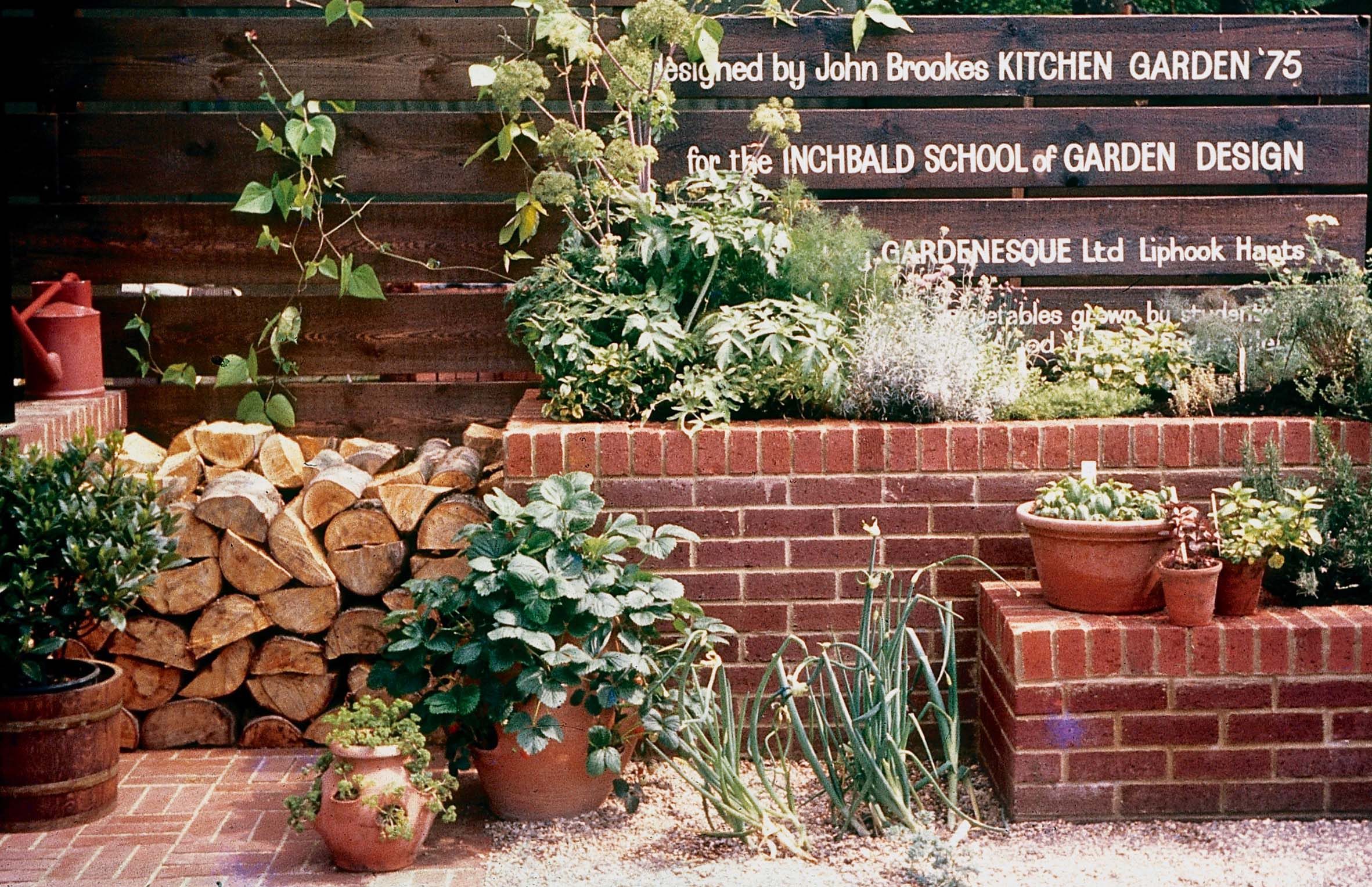the man who invented the modern garden
John Brookes MBE
“When I began my career you either had grand country houses, which tried to imitate Sissinghurst, or small town gardens where people would plonk plants around a central lawn and leave it at that. No one gave much thought to design. I wanted to show that design is the starting point, particularly in small gardens, as they need a lot of thought.”
It was Brookes who coined the phrase “room outside”. It caught his sense of a garden as a usable living space, not a collection of individual plants. His drawings applied a simple “grid system” to each site, basing it on proportions he found in its house or the main rooms inside. He insisted that this grid unified a garden and helped its designs to flow. He believed that such a pattern could be arranged with any basic shapes, including beer mats, but it was never as easy as he made it seem.
In this sense he indeed “made the modern garden”. It really was he who brought modern principles of design and use into the spaces of smallish private gardens in Britain. He saw plants in terms of form and mass, rather than as individual flowery specimens. He liked pergolas made of white poles. He was a very early apostle of planting in gravel areas. He realised that people liked to eat in their “room outside” and he wanted them to overlook a garden that they could easily manage.Robin Lane Fox, Financial Times
“John Brookes’ gardening legacy lives on in the ‘room outside’” 13 April 2018.
John Andrew Brookes MBE (1933 –2018) was a British garden and landscape designer who is widely credited as the “man who made the modern garden”. In his last book, A Landscape Legacy, John humorously and warmly shares his influences, discusses the evolution of his design philosophy, and talks about the gardens he designed and built around the world during his 50+ year career.
Click below to learn more.
http://www.pimpernelpress.com/a-landscape-legacy#book-detail-tabs-stison-block-content-0-tab3
“I am not a gardener. I am a landscape designer.”
So John Brookes MBE would admonish anyone who mistook him for the former.
Regarded as the ‘the man who made the modern garden’, Mr. Brookes designed gardens and landscapes in Britain and around the world from the late 1950’s until he died at the age of 84 in March 2018.Some of his best-known public gardens include the Penguin Books headquarters (now destroyed), the College Green Garden at Westminster Abbey (London), Fitzroy Square (London), Bryanston Square (London), Barakura English Garden in Japan, and the English Walled Garden at the Chicago Botanic Garden.
He was working on gardens in Russia, Scotland, and Sussex at the time of his death and had designed major estates in Poland, Patagonia, Russia, and the United States during his long and distinguished career.He also worked all over South America, South Africa, Australia, and Japan.
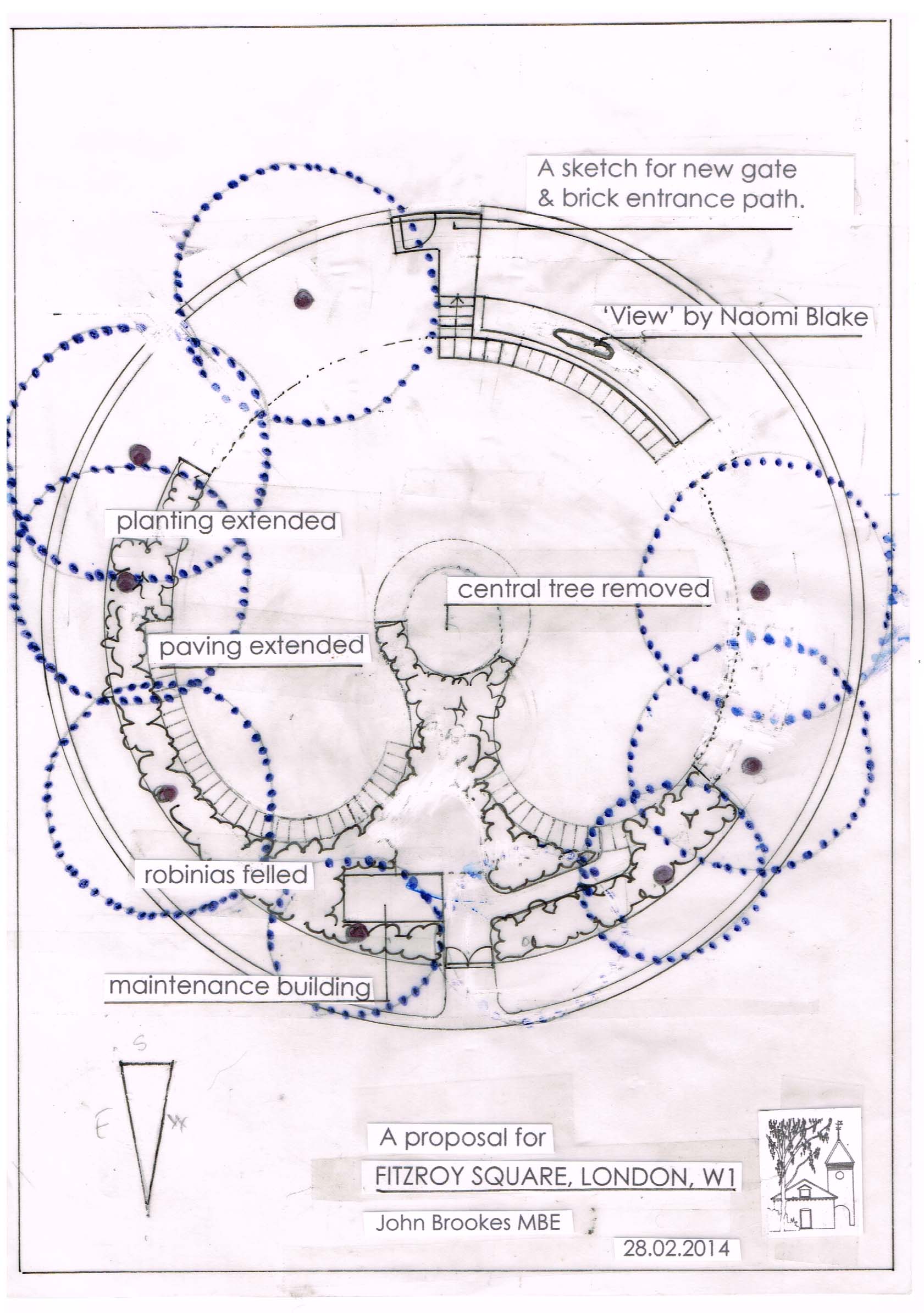
Born in Durham in 1933 Mr. Brookes had been interested in modern architecture since being taken to the Art Deco Odeon cinema as a boy by his older brother Michael and in landscape design since discovering books about Capability Brown and then Christopher Tunnard whose 1938 book, Gardens in the Modern Landscape he found in a junk shop as a teenager. Although he originally thought he’d be a farmer, when his father made it clear to him that he would not be able to procure his own farm, he decided to pursue horticulture and then completed a three-year apprenticeship at the Nottingham Parks Department.He spent the last six months of the apprenticeship working with the landscape architect, Harry Blom, a Dutchman who taught him to draw to scale and trained him in the profession before encouraging him to apply for a job with Brenda Colvin, a landscape architect and author who shared offices in London with another landscape architect and author, Dame Sylvia Crowe.
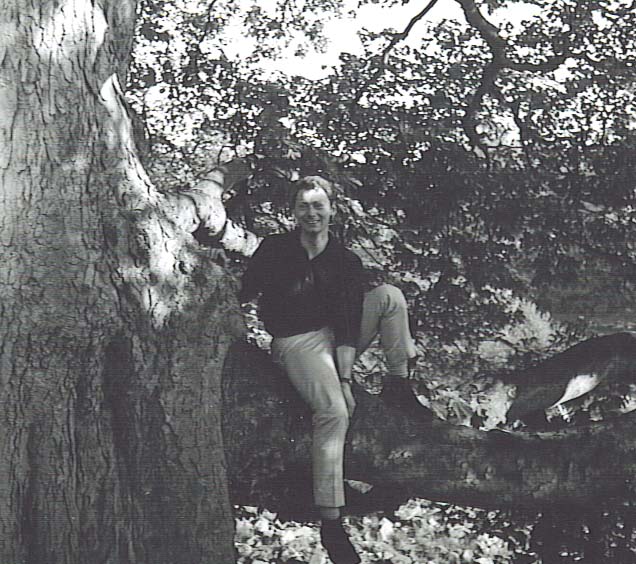
He was offered and accepted a job as junior assistant with Miss Colvin in 1956 and moved to London, spending the next four years working with her and subsequently Dame Sylvia where he learned the trade, especially plant design, the importance of drawing by hand with a soft pencil (he remained adamently opposed to computer drawings all his life), how to look at the landscape, to think about the garden as an extension of the house,that the garden should be visually connected with the architecture surrounding it, and other life-long lessons.It was in their Baker Street offices where he also met a number of important people in the field of architecture and landscape architecture, most notably Geoffrey Jellicoe (1900-96) and his wife, Susan, who introduced him to artists and designers including the Brazilian landscape designer Roberto Burle Marx, one of his heroes.Geoffrey Jellicoe was a prominent architect who worked in the fieldof landscape, and Susan Jellicoe helped Brookes become a member of the committee of the Journal of the Institute of Landscape Architects.He spent many weekends visiting gardens and art galleries with the Jellicoes.
It was at this time in the late 1950’s that Mr. Brookes also began to connect modern art and landscape design in his own work.He was especially influenced by the Modernist paintings of Piet Mondrian, the Dutch painter, and Ben Nicholsen, the English painter.In addition to Burle Marx, he was deeply influenced by the American landscape designer, Thomas Church, to whom he often referred as his “guru”.
The connection between modern art and landscape design became of especial significance in Mr. Brookes’ work when he went on to work at Architectural Design magazine in 1960 and was redrawing architects’ plans for publication. The paintings by Mondrian and Nicholsen helped him to develop a strong sense of both the horizontal and the vertical line in architecture.As he explained in his memoir, A Landscape Legacy, this enabled him to develop his method of “using a grid as a way of imposing discipline on my designs.I had learned about the modern architecture module while redrawing architects’ plans at AD, so I had a strong understanding of the vertical line.
“To create a horizontal line, I took the house module or grid on plan, and extended it beyond the house to create a pattern for the garden that would ultimately have a proportionate relationship to the structure it surrounded.” (A Landscape Legacy,John Brookes) The grid methodology, which he taught and wrote about for the rest of his life, enabled him to ensure his gardens were in the right proportion to the architecture of buildings surrounding them.

Recognizing the rapidly changing lifestyles of what was then “modern” life, Mr. Brookes vigorously broke with previous garden design traditions and the emphasis on showcasing plants by advocating the use of gardens as extensions of the home. Ahead of his time, he introduced the notion that a garden could be low-maintenance as well as beautiful by recognizing the proposed use of a garden before designing it, thereby ensuring that lifestyle, architecture and garden were a harmonious “whole”.
His approach was first publicly unveiled in 1962. That year, Mr. Brookes became the first independent designer to present a Chelsea Flower Show exhibition garden, audaciously creating a designed exterior space at Chelsea that had seating, sculpture, even a place for an incinerator, and was linked to an imaginary townhouse interior but had minimal emphasis on plants. His approach was unprecedented and presented the then-novel idea that people of all income levels could have designed, fashionable, peaceful gardens tailored to their preferences. Plants were part of the design but subordinate to the garden’s purpose which he taught should be a ‘Room Outside’, the title of his ground-breaking book published in 1969 (revised in 2007). Having begun writing articles for various publications, including Architectural Design, Room Outsidewas the first of over 25 books and pamphlets that he wrote about garden and landscape design.
Though the groundbreaking 1962 Chelsea Garden exhibition garden was controversial, it was awarded the Flora silver medal by the Royal Horticultural Society and helped put a spotlight on Mr. Brookes as an up and coming designer.
In the next several years, he designed a number of important public gardens as well as private gardens, creating stylish gardens that suited a modern lifestyle that required low-maintenance designs and clean simply lines with geometry and materials that were visually compatible with the surrounding architecture.
Mr. Brookes went on to design seven more Chelsea Flower show gardens, three of which were sponsored by the Financial Times of London and the last three were with the Inchabald School of Design where he served as director.
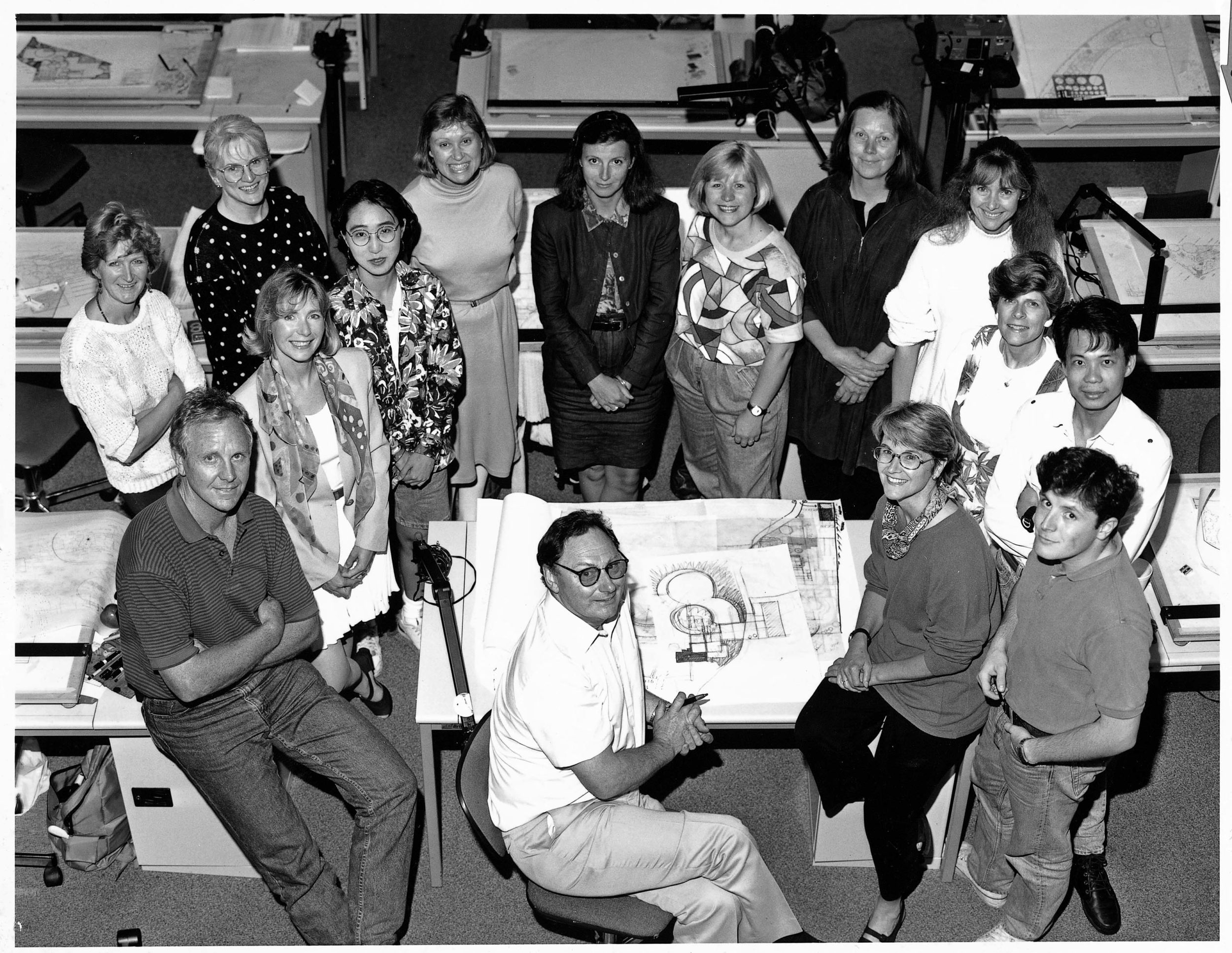
During his long career, Mr. Brookes taught and lectured around the world, influencing thousands homeowners, garden designers, and contractors over his 50+ year career. In 1980, after a two-year stint teaching interior design for the Inchbald School in Tehran, he moved to Denmans Garden, which had been created by Joyce Robinson.It was there that he founded the Clock House School of Garden Design and redesigned Mrs. Robinson’s garden while retaining her iconic dried river beds and integrating her unique and striking planting style.Though he became too busy traveling, teaching,and designing to keep the Clock House School open, Mr. Brookes remained at Denmans for the rest of his life.It was at Denmans that he pursued his hobby –gardening.
Mr. Brookes went on to set up schools of design in Chile, Japan, and Argentina, taught master classes at the New York Botanical Garden, and ran a summer design course at Chateau La Napoule in southern France. It is because of his energetic writing, teaching, and television appearances that he became widely regarded as the “king” and “godfather” of garden and landscape design.He traveled widely and became friends with several of the great names in landscape design and horticulture, including Beth Chatto, James van Sweden,and Christopher Lloyd, among others.Although he is best known for teaching his “grid” method of design, which enables a designer to determine proper proportions for spaces and mass in a garden, Mr. Brookes also taught that while garden design was an art form, gardens should serve the needs of those who use them.
As he began to travel and design abroad, he became convinced that gardens, public or private, should be connected to the culture, history, and landscapes in which they are built and went on to teach students around the world to look at their own gardening traditions and native materials and plants for inspiration.He used bold lines and geometric patterns in larger gardens to connect them to the geometry and patterns of the landscapes around them so that landscape and garden, though separated by distance and space were as connected as garden and architecture.In each country, though his methodology and philosophy of design was consistent, the gardens he created were as varied and unique as the sites and clients with whom he worked.
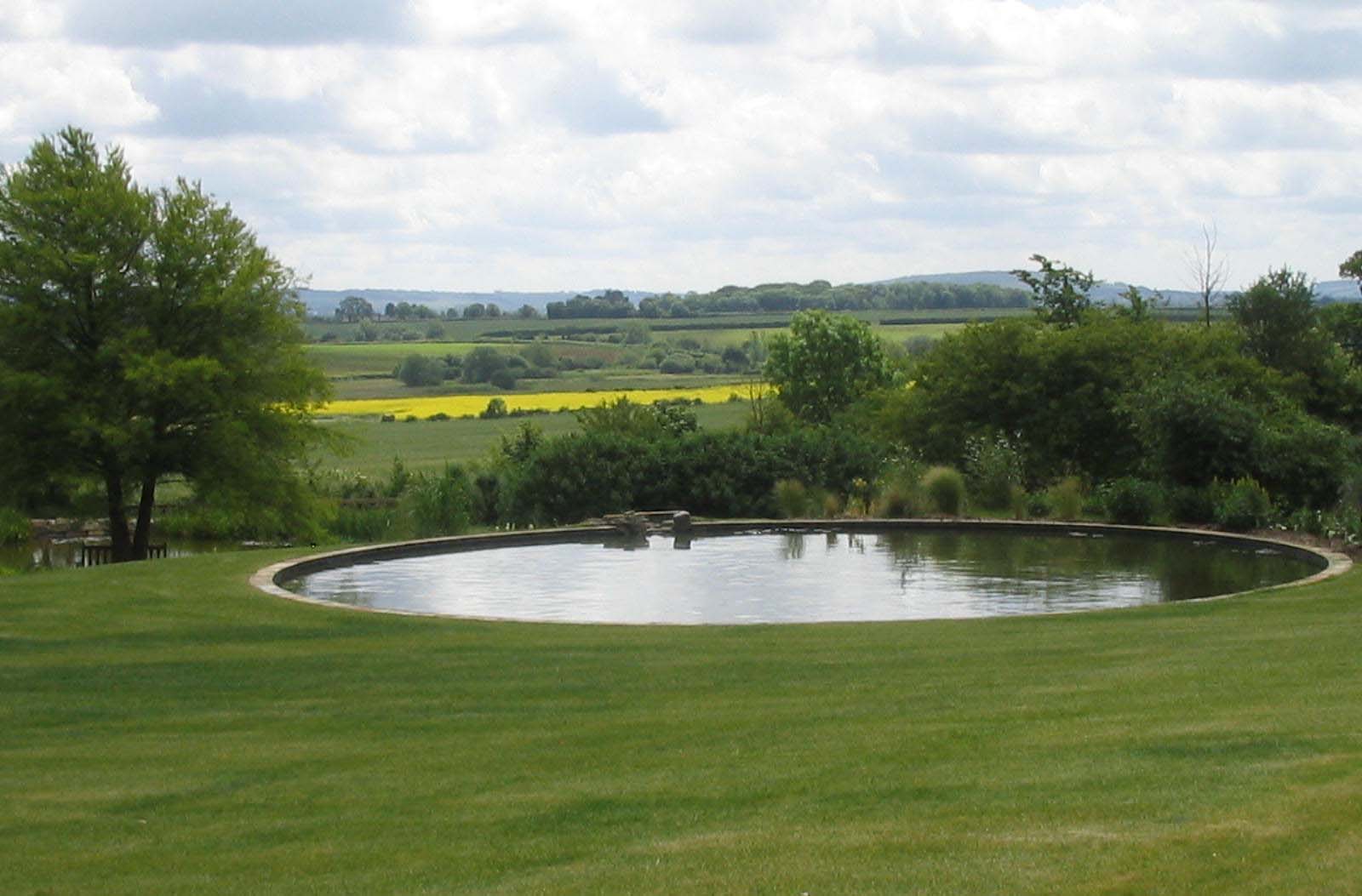
Mr. Brookes served as the chairman of the Society of Garden Designers from 1996-99, and has received myriad awards and prizes, including the Award of Distinction of the American Association of Professional Landscape Designers, the Garden Writers’ Association of America Award of Excellence, and countless other international awards, including four Chelsea Flower Show Gold Medals. In 2004 he was awarded an MBE for garden design and services to horticulture.

Renowned for his generosity in giving time and design expertise to local causes, Mr. Brookes served as the chairman of the Friends of the Aldingbourne Trust and as a Samaritan in his latter years.
While his 2018 memoir, “A Landscape Legacy” (Pimpernel Press) tells the story of his remarkable life in his own words, Mr. Brookes is remembered by his friends for his sharp wit and straight talk; his love of pugs, Chopin nocturnes, blended whiskey, yellow mimosas and Annabel hydrangeas, and walking in the South Downs; warm summer evenings at his garden, Denmans, in West Sussex; pub dinners; and his constant, generous encouragement, not always gentle, of lovers of design.
1969 Room Outside –Thames & Hudson, Viking;
1979 Penguin paperbacks
1970 Living in the Garden, Queen Ann Press
1970 Gardens for Small Spaces –Pan Books
1970 Garden Design and Layout –Queen Anne Press
1975 Financial Times Book of Garden Design –David & Charles
1977 Improve Your Lot -Heinemann
1977 The Small Garden –Marshall Cavendish;
1984 Aura Paperbacks
1984 A Place in the Country –Thames & Hudson
1986 The Indoor Garden Book –Dorling Kindersley (Germany –Christian Verlaag; USA –Crown)
1987 Gardens of Paradise -Weidenfeld
1987 The Country Garden –Dorling Kindersley (Germany –Christian Verlaag; USA –Crown)
1987 The Gardener’s Index of Plants and Flowerswith Kenneth Becket
1989 The New Small Garden Book –Dorling Kindersley (Germany –Christian Verlaag)
1991 John Brookes’ Garden Design Book –Dorling Kindersley (USA –Macmillan)
1994 Planting the Country Way –BBC Publications
1994 John Brookes’ Garden Design Workbook –Dorling Kindersley
1996 Home & Garden Style –with Eluned Price, Cassell Publications Ltd
1996 Planning a Small Garden, Dorling Kindersley
1998 JohnBrookes’ The New Garden –Dorling Kindersley (USA –Macmillan)
2002 John Brookes Garden Masterclass –Dorling Kindersley (Guild of Garden Writers –Enthusiasts Book of the Year 2002 –2003)
2006 Small Gardens –Revised,Dorling Kindersley
2007 John Brookes Garden Design Course –Mitchell Beazley
2007 Room Outside -Revised,Antique Collectors’ Club
2007 John Brookes –Well Designed Garden –Dorling Kindersley
LINKS

